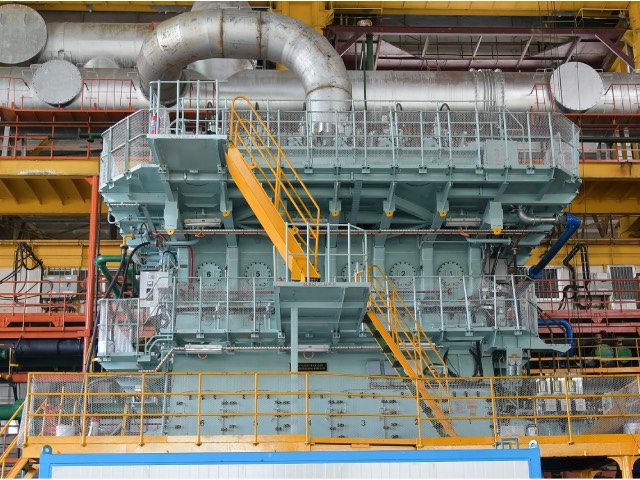Swiss engine developer WinGD has celebrated the launch of the first marine two-stroke engine to carry its own NOx abatement solution, offering dramatic reductions in space requirements and installation costs for shipyards seeking to comply with the strictest IMO NOx emission limits.
The X52 low-speed engine with integrated Selective Catalytic Reduction (iSCR) was launched during a ceremony at Dalian Marine Diesel Co. in China. The six cylinder two-stroke engine, with a maximum continuous output of 11,640 kW, will be installed on a 50,000-tonne tanker built by CSSC Chengxi Shipyard for Japanese owner Kumiai Senpaku.
WinGD Director of Global Sales, Volkmar Galke said: “SCR is a well-proven way of reducing toxic NOx emissions. Making a more compact, on-engine solution has occupied developers for a long time and we’re delighted to have reached this landmark with the help of our partners, and to be able to offer big cost savings and even greater ship design flexibility to our customers.”
SCR is one of the most effective methods of reducing NOx emissions in line with IMO’s Tier III requirements. As with all off-engine aftertreatment methods there are multiple constraints: high exhaust temperatures are required for effective operation; additional installation costs are incurred for auxiliary equipment alongside the engine; and more space is required for additional equipment, meaning less flexibility in ship design and cargo carrying configurations.
The X52 engine will have a high-pressure (HP) SCR reactor integrated on-engine, directly to the exhaust manifold. This means less off-engine auxiliary equipment and piping is required, reducing installation costs and space requirements. The location of the SCR directly upstream of the turbocharger also means higher operation temperatures, conducive to more effective NOx removal. The iSCR-fitted engine also offers low heat dissipation, easy switching between IMO Tier II and IMO Tier III modes, and WinGD’s latest automation and control systems with monitoring and predictive diagnostic features. Lastly it offers customers fuel flexibility in that HP-SCRs can still run on high sulphur fuels which extends the savings to reduced operational costs.
The X52 engine with iSCR is the latest collaborative project between WinGD and the China Shipbuilding Power Engineering Institute (CSPI), both owned by China State Shipbuilding Corp’s CSSC Power Group. International collaborations are key to WinGD’s vision of powering the shipping industry’s sustainable energy transition, delivering future-ready customer solutions that ensure continuous progress towards IMO’s environmental goals.
NOx emissions aftertreatment is needed for all marine engines burning heavy fuel oil or marine diesel. WinGD aims to make iSCR available as a first step for single turbocharger applications of its diesel-burning X-series low-speed engines. While NOx abatement is also needed for high-pressure engines using LNG, WinGD’s low-pressure X-DF dual-fuel engines comply with IMO Tier III without aftertreatment – again reducing installation costs, complexity and space requirements for shipyards while reducing CAPEX and OPEX for ship owners.









































